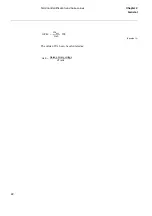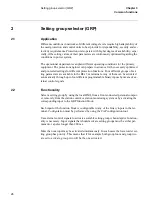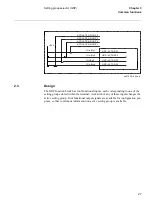
12
Requirements
&KDSWHU
*HQHUDO
•
low remanence type CT
•
non remanence type CT
7KHKLJKUHPDQHQFHW\SH
has no limit for the remanence flux. This CT has a magnetic
core without any airgap and a remanence flux might remain for almost infinite time. In
this type of transformers the remanence flux can be up to 70-80% of the saturation flux.
Typical examples of high remanence type CT are class P, TPS, TPX according to IEC,
class P, X according to BS (British Standard) and nongapped class C, K according to
ANSI/IEEE.
7KHORZUHPDQHQFHW\SH
has a specified limit for the remanence flux. This CT is made
with a small airgap to reduce the remanence flux to a level that does not exceed 10% of
the saturation flux. The small airgap has only very limited influence on the other prop-
erties of the CT. Class TPY according to IEC is a low remanence type CT.
7KHQRQUHPDQHQFHW\SH&7
has practically negligible level of remanence flux. This
type of CT has relatively big airgaps in order to reduce the remanence flux to practically
zero level. At the same time, these airgaps minimize the influence of the DC-component
from the primary fault current. The airgaps will also reduce the measuring accuracy in
the non-saturated region of operation. Class TPZ according to IEC is a non remanence
type CT.
The rated equivalent limiting secondary e.m.f. E
al
according to the IEC 60044-6 stan-
dard is used to specify the CT requirements for REx 5xx. The requirements are also
specified according to other standards.
&RQGLWLRQV
The requirements are a result of investigations performed in our network simulator. The
tests have been carried out with an analog current transformer model with a settable
core area, core length, air gap and number of primary and secondary turns. The setting
of the current transformer model was representative for current transformers of high re-
manence and low remanence type. The results are not valid for non remanence type CTs
(TPZ).
The performance of the distance protection was checked at both symmetrical and fully
asymmetrical fault currents. A source with a time constant of about 120 ms was used at
the tests. The current requirements below are thus applicable both for symmetrical and
asymmetrical fault currents.
Both phase-to-earth, phase-to-phase and three-phase faults were tested in fault locations
backward, close up forward and at the zone 1 reach. The protection was checked with
regard to directionality, dependable tripping, and overreach.
Summary of Contents for REO 517
Page 10: ... RQWHQWV ...
Page 16: ...6 Introduction to the application manual KDSWHU QWURGXFWLRQ ...
Page 64: ...54 Blocking of signals during test KDSWHU RPPRQ IXQFWLRQV ...
Page 88: ...78 Scheme communication logic ZCOM KDSWHU LQH LPSHGDQFH ...
Page 146: ...136 Unbalance protection for capacitor banks TOCC KDSWHU XUUHQW ...
Page 166: ...156 Dead line detection DLD KDSWHU 3RZHU V VWHP VXSHUYLVLRQ ...
Page 378: ...368 Monitoring of DC analog measurements KDSWHU 0RQLWRULQJ ...
Page 384: ...374 Pulse counter logic PC KDSWHU 0HWHULQJ ...
Page 412: ...402 Serial communication modules SCM KDSWHU DWD FRPPXQLFDWLRQ ...
Page 440: ...430 LED indication module KDSWHU DUGZDUH PRGXOHV ...
















































